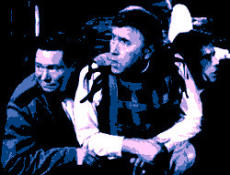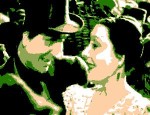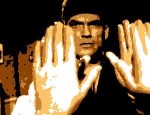Film Review
The St Trinian's saga had all but run its course with
The Pure Hell of St Trinian's
(1960), the third in a series of films written and directed by Sidney
Gilliat and Frank Launder, but, like a sick patient that refuses to
die, it staggered on, plodding through two more embarrassing episodes,
finally expiring in
The Wildcats of
St Trinian's (1980).
The
Great St. Trinian's Train Robbery (1966) may have performed
quite well at the British box office but an enduring classic it
certainly is not, and it's hard to comprehend how a film that boasts
such an abundance of comedic talent (the cast includes such luminries
as Frankie Howerd, Dora Bryan, George Cole and Terry Scott) could be so
dull and humourless. Lacking the star alumni of the original St
Trinian's films - Alastair Sim and Joyce Grenfell - there isn't much to
sustain this flimsy fourth outing for the school from hell. The
writers were obviously far too busy with the plot and satirising
the Labour government's faith in comprehensive education to bother with
a piffling detail like gags. The end result is nothing more than
a mechanical heist movie lazily grafted onto the tired girls' school
formula. What few attempts at humour there are are more likely to
make you cringe than laugh. The Pakistani porter asides during an
overly protracted and tedious railway chase have to be among the most
embarrassing moments in British cinema - oh my goodness, yes
indeed. Crass and wholly unimaginative,
The Great St. Trinian's Train Robbery
marked a new low for the Gilliat-Launder partnership.
© James Travers 2014
The above content is owned by frenchfilms.org and must not be copied.
Next Sidney Gilliat film:
Millions Like Us (1943)
Film Synopsis
A gang of train robbers conceal their ill-gotten gains under the
floorboards of an abandoned country house, planning to recover their
£2.5 million haul once the hue and cry has died down. In
the meantime, the house is bought by St Trinian's School for Girls with
a grant provided by a generous Labour government. At the request
of the gang leader, one of the crooks enrols his two daughters at the
school to find the easiest way to recover the loot. An imminent
Parents' Day will provide the perfect distraction - or so it
appears. Unfortunately, the school's headmistress, Amber
Spottiswood, her resident turf accountant, Flash Harry, and just about
everyone in the school realises what is afoot and, in a frantic attempt
to claim the reward money set out to foil the train robbers' scheme...
© James Travers
The above content is owned by frenchfilms.org and must not be copied.



